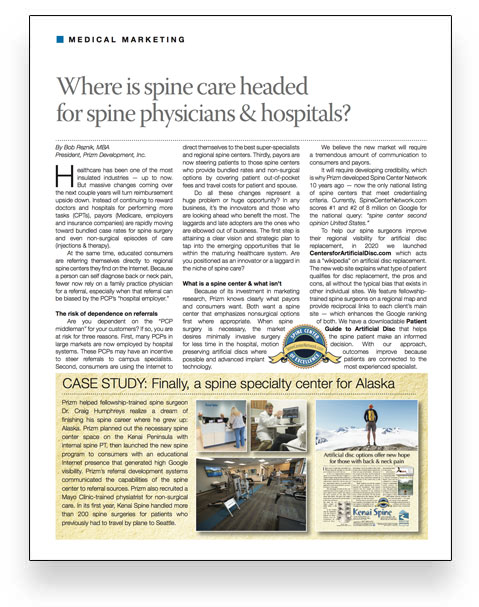Celebrating 30 years as the nation’s most experienced developer of spine & orthopedic centers of excellence.
- 817-481-2450
- Contact Us
-
Spine Center Development
Knee Exercises
Back to Exercise Library.
The best way to prevent injury is by having strong, flexible muscles and joints which resist strain and injury. With some simple cases of knee pain, certain exercises can help relieve some pain episodes. Remember, never do any exercise that causes increased pain.
Knee Exercise Menu
- Double Knee To Chest
- Leg Cycle Exercise
- Leg ADduction
- Unweighted Flexion
- Knee Full Extension Exercise
- Ankle Stretch
- Single Hamstring Stretch
- Knee Stretch
- Straight-Leg Lift Exercise
- Straight-Leg Piriformis Stretch
- Horizontal Straight-Leg Raise with Chair
Double Knee To Chest

Start on your back with your legs outstretched. Bring both knees up together and place your hands below the knee area on the top of the shin. An alternative place for your hands is the back of the thighs. Slowly bring your knees toward your chest, hold for ten seconds, then go back to starting position.
“Unweighted Exercises” Leg Cycle Exercise

Start by lying on your back with both legs upward. Extend both your arms out at your sides for balance. Begin a cycling motion with your feet in the air. Try to increase the range of motion in the knee joint area, so the flexion in each leg goes from almost straight and extended to bent at a ninety degree angle.
Leg ADduction
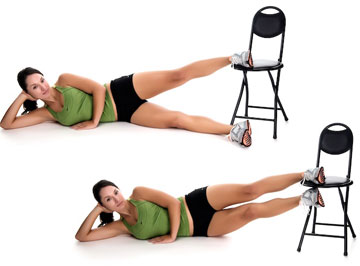
As shown, start with one foot above the chair, and one below resting on the ground. Raise the straightened leg upward against the bottom of the chair. Hold for ten seconds and then return the leg to the floor.
Unweighted Flexion
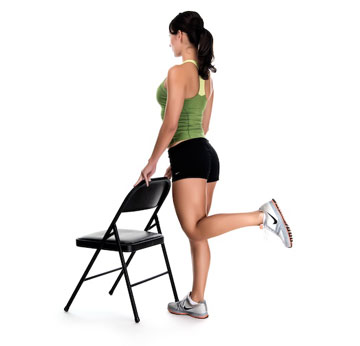
Stand behind a chair using the back of the chair for balance. Flex your left leg up to about a ninety degree angle, hold for ten seconds, then go back to starting position. Switch legs, and do ten repetitions with each leg.
Knee Full Extension Exercise
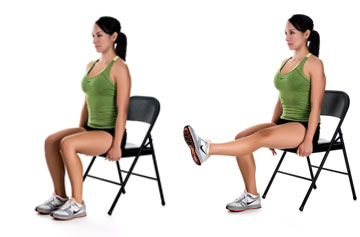
Start by sitting in a chair that is high enough so that the knee can bend to a ninety degree angle. Slowly raise the leg until it is horizontal. Hold for five seconds, and slowly let it return to the ground. Repeat with other leg. Do twenty repetitions, if able.
Ankle Stretch
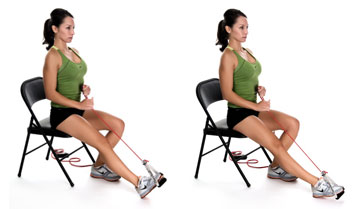
Place one end of a Sportcord over your right foot at the instep (not the tip of the shoe). Extend your right leg and pull up the Sportcord until you have the desired resistance and difficulty. Extend your right toe downward, as if you are pressing on the gas pedal in your car. Hold extended for five seconds, and then repeat twenty times. Switch
Single Hamstring Stretch

Sit on the floor with your left leg outstretched and your right leg bent as shown. With both hands extended, reach out toward your toes of the left foot. Don’t bounce, just stretch slowly. Try to hold the stretch for ten seconds, then go back to the starting position. Do ten repetitions before switching legs.
Knee Stretch
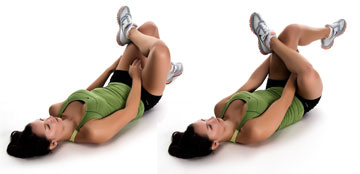
Start with your right leg slightly bent as shown, and with your left leg crossed over the other. Grab the right leg at the back of the thigh and pull toward the chest until the right leg is straight up, but no farther. Hold for five seconds, then return to starting position. Switch legs and repeat. Do ten repetitions with each leg. Discontinue if the exercise causes more pain to your sore knee.
Straight-Leg Lift Exercise
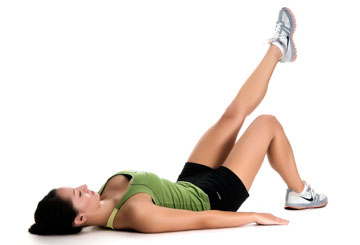
Start by lying on your back with your left leg bent upward. Keep your right leg completely extended straight out. Slowly raise your right leg to about a forty-five degree angle, keeping the leg locked straight. Hold for five seconds and then slowly lower to the flat, resting position. It is not necessary to take the leg straight up to ninety degrees, as the most difficult range of motion is the first two feet off the ground. Repeat twenty times. Switch to the left leg.
Straight-Leg Piriformis Stretch
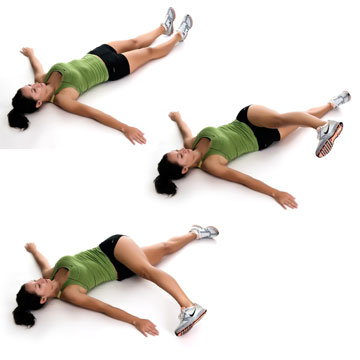
Lie on your back as shown. Raise your left leg and bring it across your body, trying to make it touch the ground by your right hand. Keep both your shoulders flat to the ground. Hold for twenty seconds, then return to starting position and repeat for the other leg. Do ten repetitions with each leg.
Horizontal Straight-Leg Raise with Chair
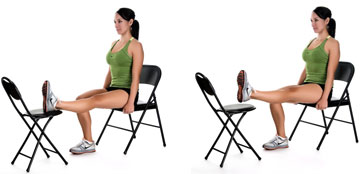
Use two chairs or a chair across from a sofa. While seated, extend your leg so that it rests on the other chair. Slowly raise the leg no more than twelve inches, keeping it straight during the motion. Hold for ten seconds, then return to starting position. Repeat ten times for each leg.
NOTE: We recognize that people will diagnose and treat themselves. We have provided this medical information to make you more knowledgeable about nonsurgical aspects of care, the role of exercise in your long-term recovery, and injury prevention. In some cases exercise may be inappropriate. Remember, if you diagnose or treat yourself, you assume the responsibility for your actions. You should never do any exercise that causes increased pain. You should never do any exercise that places body weight on a weakened or injured limb or back.
Disclaimer:
The pictures displayed in this website are images of physicians, patients and employees who have consented to have their pictures in this website. If you are viewing in Internet Explorer 8 or older you may need to update your browser.
RELATED TOPICS
Spine Center Development How to Launch a Spine Center Market Assessment Spine Center Design Space Planning Name Development Medical Advice Exercise Library Patient Education Case Rate Pricing ASCs & Specialty HospitalsHAVE A QUESTION?
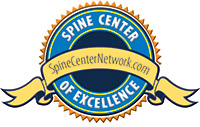
Wouldn’t it be convenient if someone created a listing of spine centers of excellence across the United States that all emphasize non-surgical treatment options before surgery?
Finally, there is a place.

Centers for Artificial Disc is the only verified national listing of spine centers that specialize in artificial disc replacement surgery.
CentersForArtificialDisc.com